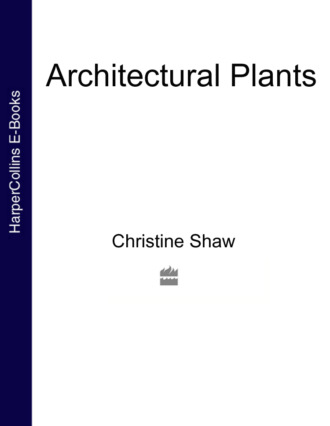
Полная версия
Architectural Plants

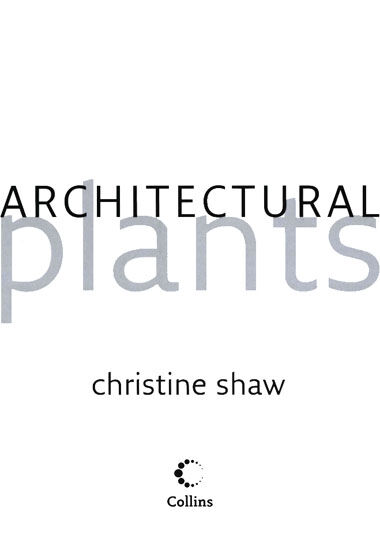

ABOVE
Alocasia macrorrhiza
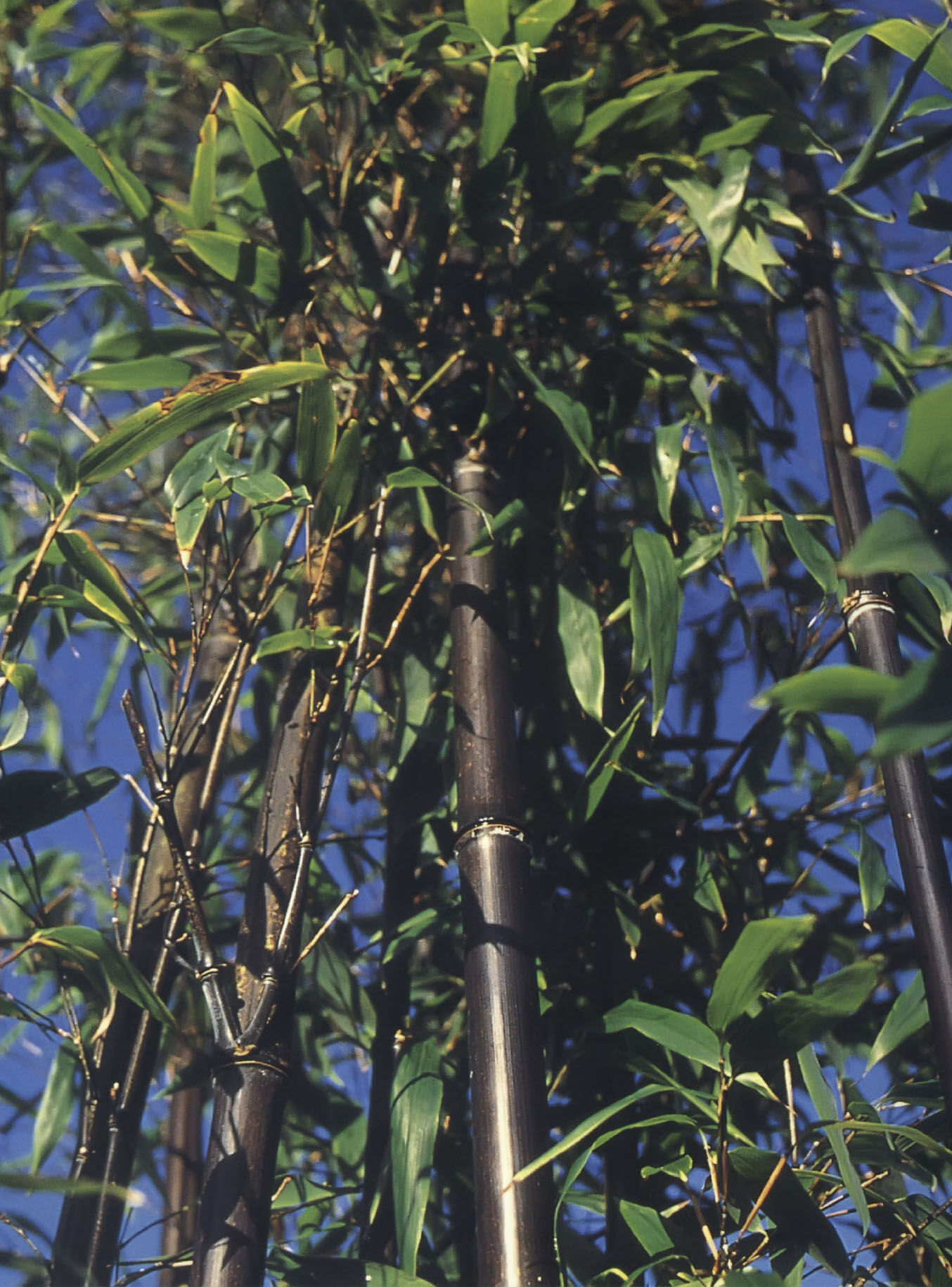
ABOVE
Phyllostachys nigra

Collins
An imprint of HarperCollinsPublishers Ltd. 1 London Bridge Street London SE1 9GF
www.harpercollins.co.uk
First published in 2005 by Collins
Text copyright © Christine Shaw
Design and layout copyright
Copyright © HarperCollinsPublishers Ltd.
Editor: Helen Ridge
Designer: Alison Fenton
For HarperCollins
Senior Managing Editor: Angela Newton
Assistant Editor: Lisa john
Production Controller: Chris Gurney
A CIP catalogue record for this book is available from the British Library
The Author asserts the moral right to be identified as the author of the this work
All rights reserved under International and Pan-American Copyright Conventions. By payment of the required fees, you have been granted the nonexclusive, nontransferable right to access and read the text of this ebook on-screen. No part of this text may be reproduced, transmitted, downloaded, decompiled, reverse-engineered, or stored in or introduced into any information storage and retrieval system, in any form or by any means, whether electronic or mechanical, now known or hereafter invented, without the express written permission of HarperCollins ebooks
HarperCollinsPublishers has made every reasonable effort to ensure that any picture content and written content in this ebook has been included or removed in accordance with the contractual and technological constraints in operation at the time of publication
Source ISBN: 9780007204700
Ebook Edition © FEBRUARY 2017 ISBN: 9780007442607
Version: 2017-02-08
Dedication
This book is for my daft cousin Steve, whose knowledge of horticulture could be written on a small postage stamp, and also for my learned chum Angus White, whose extensive plant knowledge has been a pleasure to share.
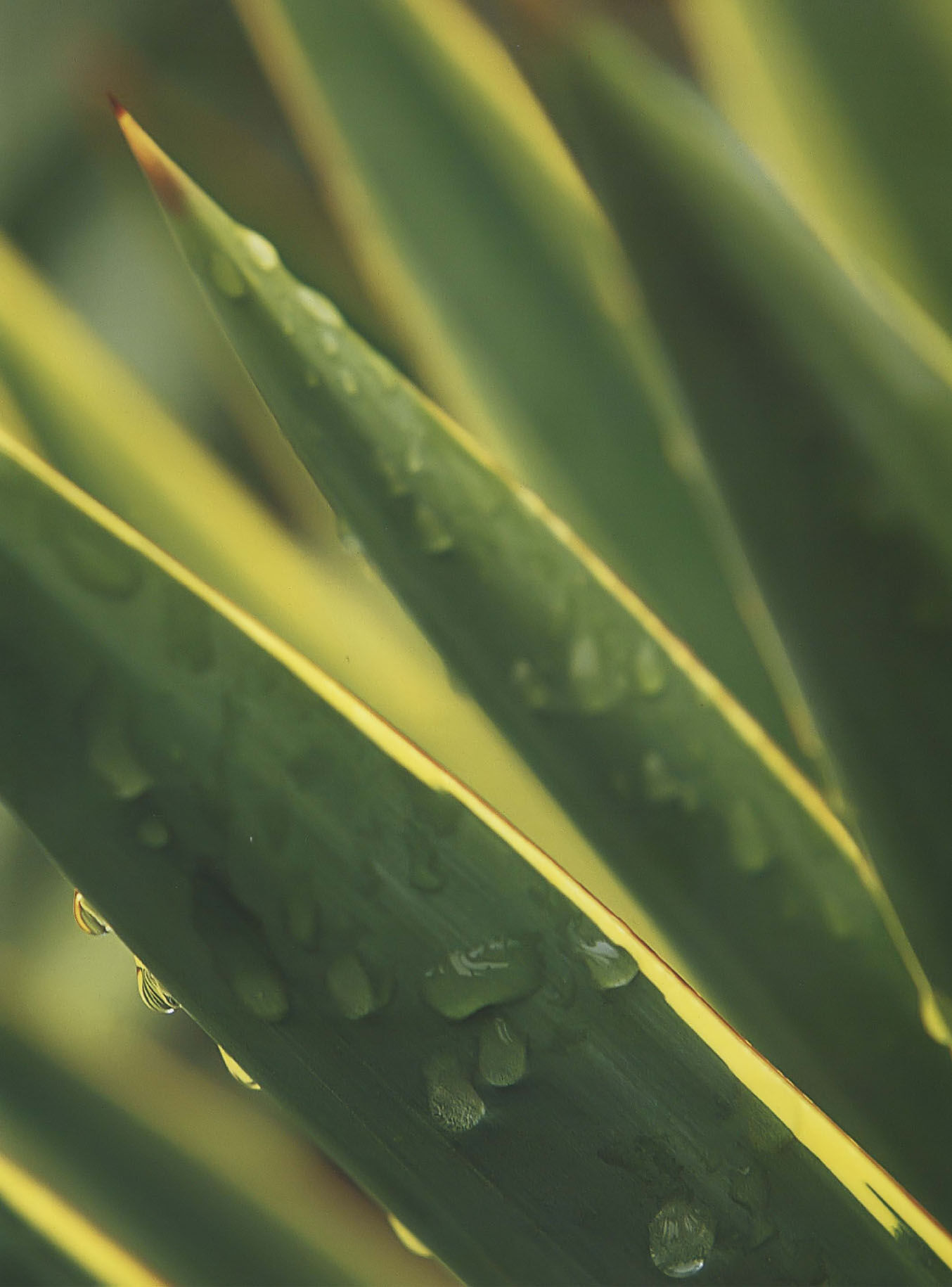
ABOVE
Yucca gloriosa variegata
Hardiness colour codes
All the plants featured in this book have been given a hardiness colour code. This is to help you select plants that are capable of surviving the winters in your area.






ABOVE
Alocasia macrorrhiza
Contents
Cover
Title Page
Copyright
Dedication
Introduction
Making the right decisions
Architectural plants in the garden
Palms
Ferns
Grasses
Bamboos
Climbers
Trees
Other leafy exotics
Spiky & succulent plants
Pests, diseases & other disorders
Index
Acknowledgments
About the Publisher
Introduction
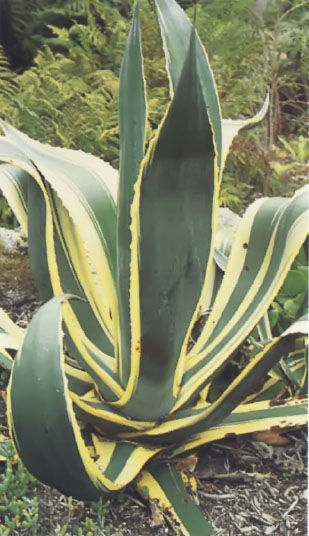
ABOVE
Agave americana variegata is a wonderful spiky choice for a mild garden.
Architectural plants are currently enjoying a massive wave of popularity, and quite rightly so. In fact, this type of gardening is the fastest-growing area of horticulture. More and more gardeners are realizing that these types of plants can have a dramatic effect on an ordinary garden, transforming it into something much more exciting.
I have always had an interest in gardening and, after six years of dealing with various company accounts and other financial shenanigans, followed by a rather lengthy stint as a croupier, decided that a career in horticulture was long overdue. The usual channels of night school and part-time college courses resulted in a job at the local garden centre, but I quickly came to the conclusion that fruit trees and roses weren’t as interesting as I had first thought and that it was time to move on. So, off I went for an interview at a company called Architectural Plants. As soon as I approached the premises, I knew this was where I wanted to be. The whole place was stuffed to the gunwales with exotic-looking trees, banana plants (Musa), spiky Yucca and all manner of wonderful things. Nearly fifteen years later, I still enjoy every aspect of working with these incredible plants.
For a plant to be considered architectural, it needs to have either a strong shape, an exotic appearance, an evergreen presence or an unusual quality that can visually improve its surroundings.
Some plants such as palms, Agave, Yucca and tree ferns (Dicksonia) have obvious architectural traits. They have a strong, shapely outline and are completely different from the sort of plants most gardeners are used to. They are very noticeable in the garden, and have year-round appeal. As they are evergreen, their theatrical allure is particularly valuable during the winter when other more traditional gardens in the neighbourhood look tired and dull, with most plants having shed their leaves.

ABOVE
This colonial-style office surrounded by exotic greenery forms part of the Architectural Plants nursery. See page 352 for contact details.
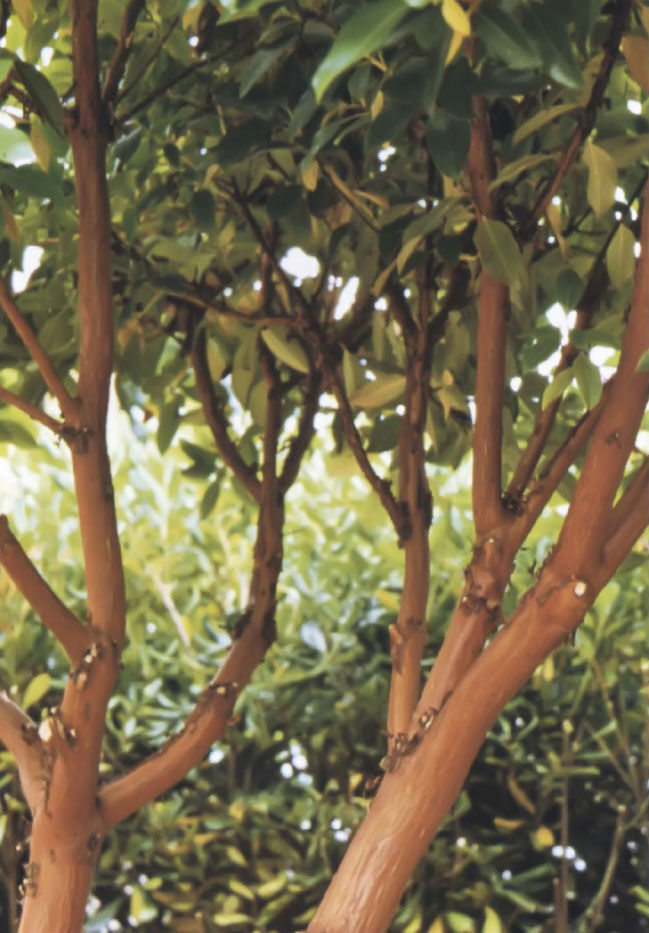
ABOVE
Arbutus x andrachnoides has everything a gardener could ever want from a small, ornamental evergreen tree.

ABOVE
Musa basjoo has large jungly leaves that are perfect for adding a bit of drama to the garden.
Then there are architectural plants that have more subtle qualities while still remaining highly desirable. The red, peeling bark and the winter flowers of the evergreen Strawberry Tree (Arbutus x andrachnoides) make this tree one of the most coveted plants in the gardening world. The billowing shapeliness of the mature Green Olive (Phillyrea latifolia) makes this evergreen tree an essential choice for any small garden. The huge, glossy leaves of a Fatsia are perfect for adding an evergreen, tropical air to a dark corner. And an evergreen, jungly bamboo not only looks beautiful, but there is also the bonus of the gentle rustling of its leaves whenever there’s a light breeze.
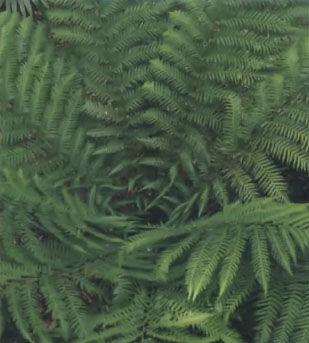
ABOVE
The large lush foliage of Dicksonia antartica makes a spectacular addition to any mild garden.
There are also plants here which, although not evergreen, are so loud, brash and vibrant, and add such an exciting impact to the garden, they could be called nothing less than architectural. The absurd, massive leaves of the Hardy Japanese Banana (Musa basjoo), the fabulous flowers of the Ginger Lilies (Hedychium), the colourful tropical-looking Canna and the large velvety foliage of the Foxglove Tree (Paulownia tomentosa) all have the capability of injecting some obvious glamour and pizazz to even the most pedestrian of gardens.
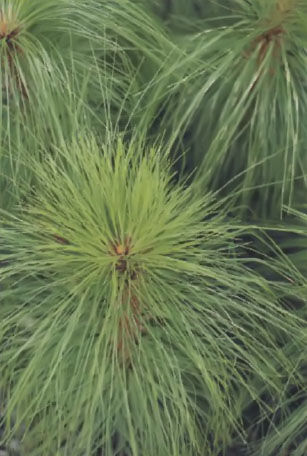
ABOVE
Pinus montezumae has soft luxuriant foliage of vivid emerald-green.
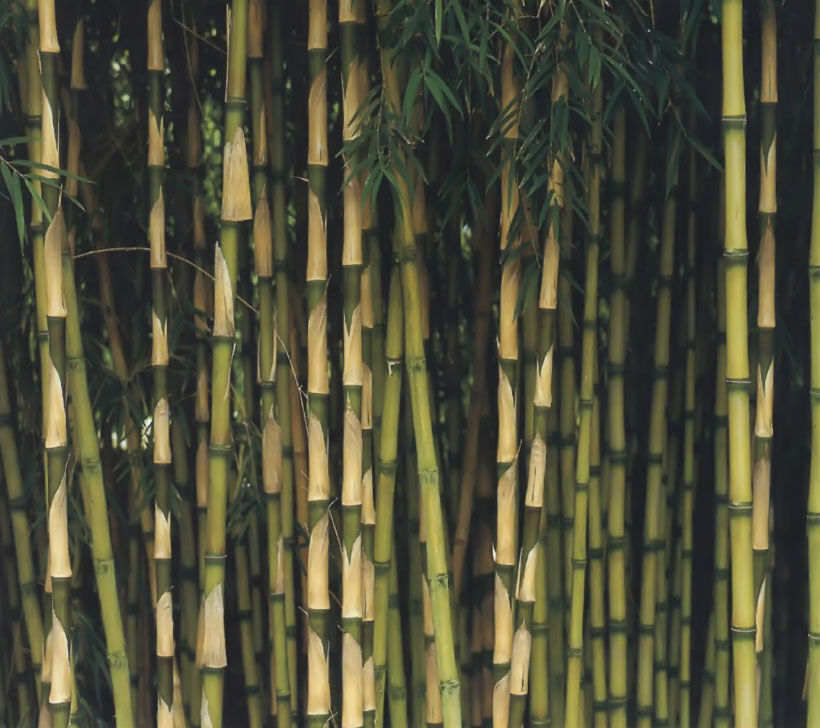
ABOVE
Chusquea breviglumis is a fabulous South American bamboo.
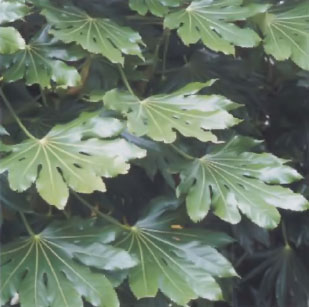
ABOVE
The large leathery leaves of Fatsia japonica make a fine jungly addition to the shadiest corner of the garden.
Apart from their architectural qualities, many of these plants have the added extras of exquisite fragrance, fat berries or juicy fruits. Many are useful for groundcover or screening purposes. Some can help to mask unwanted noise from passing traffic, while a large number can withstand the harsh conditions often found on the coast.
The plants featured in this book have been chosen for many reasons. To start with, they are all personal favourites, and they are all beautiful and exciting. Most of them are easy to grow and maintain, although a few challenges have been included just to make life even more interesting. Most of them are widely available from specialist nurseries and, due to their accelerating popularity, are now starting to make their way into some garden centres too.
These plants have appeal for beginners and experts alike. Novice gardeners like them because they are easy to care for, while experts love them because they are so unusual. Busy gardeners adore them because of their low-maintenance requirements. Even non-gardeners are drawn towards these plants: people who would rather be found dead in a ditch than deadhead roses or double-dig an herbaceous border suddenly realize that gardening can be pleasurable after all.
These architectural plants have also been selected with all types of climate and soil conditions in mind. If a plant can be grown successfully only in a special kind of soil and in an exceptionally mild climate, and also needs insatiable amounts of care and attention in order to thrive, it has not been included, no matter how beautiful it may be. Most of us want unusual and interesting plants for our gardens, but we can all do without difficult subjects that have a limited chance of success. Virtually all the plants here should be a permanent feature in the garden, with more than a sporting chance of reaching old age.
Although many of these plants are reasonably priced, some of the larger specimens can carry a hefty price tag. This usually applies to slow-growing plants that have taken many years to reach a decent size. For example, a palm tree from a nursery that is 12ft (3.7m) tall could easily be twenty years old. Someone has had the expense of propagating it, repotting it several times during its life, feeding, watering and generally caring for it to keep it looking lush and verdant, until it is considered ready enough to become the main feature of someone’s garden. The fact that it costs several hundred pounds should come as no surprise whatsoever. The expression ‘you get what you pay for’ is exactly right. It may help to work out how much it would cost to keep an area of the garden planted with seasonal bedding plants during the summer and again in the winter for a period of twenty years. Although these plants seem relatively cheap when bought individually, the total cost can come as quite a surprise.
Although architectural plants are becoming more and more popular, so far very little information has been written about them. This book is the first fully comprehensive guide to all aspects of gardening with these lovely plants. Although many of them were well known in Victorian times, most subsequent generations of gardeners have been completely oblivious to their fine qualities. It is only in the last fifteen years that they have been fully appreciated.

ABOVE
Catalpa bignonioides ‘Nana’ is a good choice as a large-leaved specimen tree.

ABOVE
Yucca gloriosa variegata is essential for any garden design involving a spiky element.
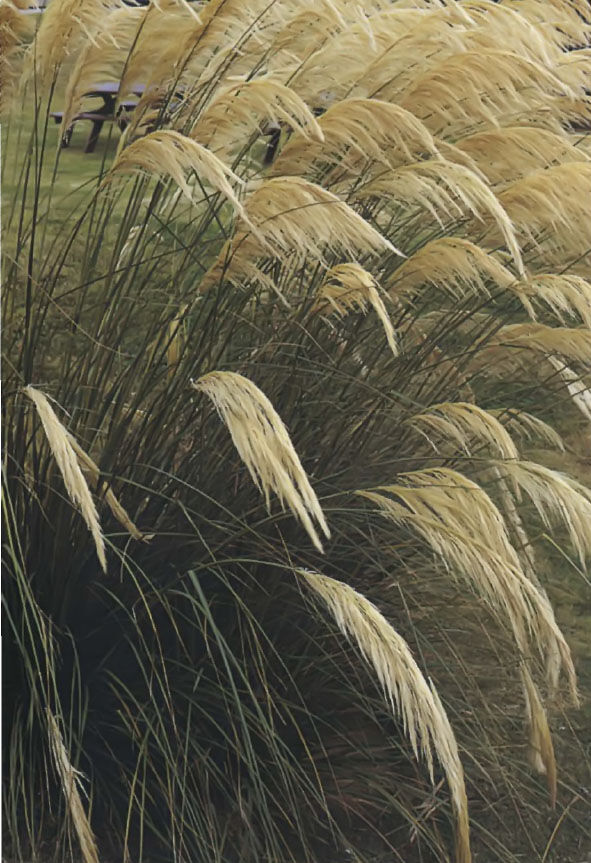
ABOVE
Cortaderia richardia looks beautiful in a breezy garden, adding movement to any planting plan as the wind swishes through the foliage.
This book lists the best possible choices of architectural plants. There are photographs of every one, with a full description of what they look like and what they do throughout the seasons. All sorts of practical information is given regarding hardiness, soil conditions, light levels and maintenance. There is advice on buying, siting and using these plants in the garden to provide different effects and planting schemes. Information has also been given on the less glamorous side of horticulture, namely which pests and diseases to look out for on each particular plant. A Rogues’ Gallery at the back of the book helps in the identification of various ailments and other annoying, unwanted presences that can be the bane of a gardener’s life.
Wherever possible I have avoided mentioning the kind of horticultural descriptions that require a glossary to explain what they mean – so very few references to culms, petioles and clustered node bases, and just basic easy-to-understand descriptions with all the emphasis on how to succeed in growing these plants, without being bogged down with unnecessary complications. However, all of the plants are listed alphabetically using their formal botanical names.
I would like to put up a spirited defence of the use of Latin in horticulture. Although no one detests rules and regulations of any kind more than I do, using the correct Latin names for all plants is essential. Apart from a few lapses in the naming of bamboos, most plants have only one Latin name. No matter which country you live in, this name is always the same, and there can be no confusion about which plant is being referred to. This might be stating the obvious, but this revelation didn’t really dawn on me until I worked abroad. The common names of plants are different in every part of every country, and it’s impossible to learn them all. Sometimes the common name of a plant in England refers to a totally different plant in Australia, and even in Scotland.
Despite the long words, horticultural Latin really isn’t as intimidating as it first appears. It is not as strict as Classical Latin, so all the horrors of Latin classes at school can be forgotten. Of course, some people like to spout Latin just because they enjoy sounding pompous, but pomposity isn’t a quality solely restricted to horticulture.
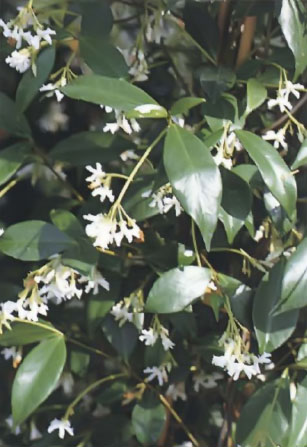
ABOVE
Trachelospermum jasminoides provides strong fragrance in the garden throughout the summer.
This book is intended to inspire confidence in growing these amazing plants and to enable any gardener to create some stunning effects with them. Whether you plant just one or two strategically to liven up a border or opt completely for this type of planting and transform the entire garden, this book offers all the advice and help required to do so. But, be warned, this type of gardening is addictive. The addition of just a few plants to start with can make ordinary garden plants seem so tame and lacklustre that more and more will probably be acquired until a whole new look has been achieved.
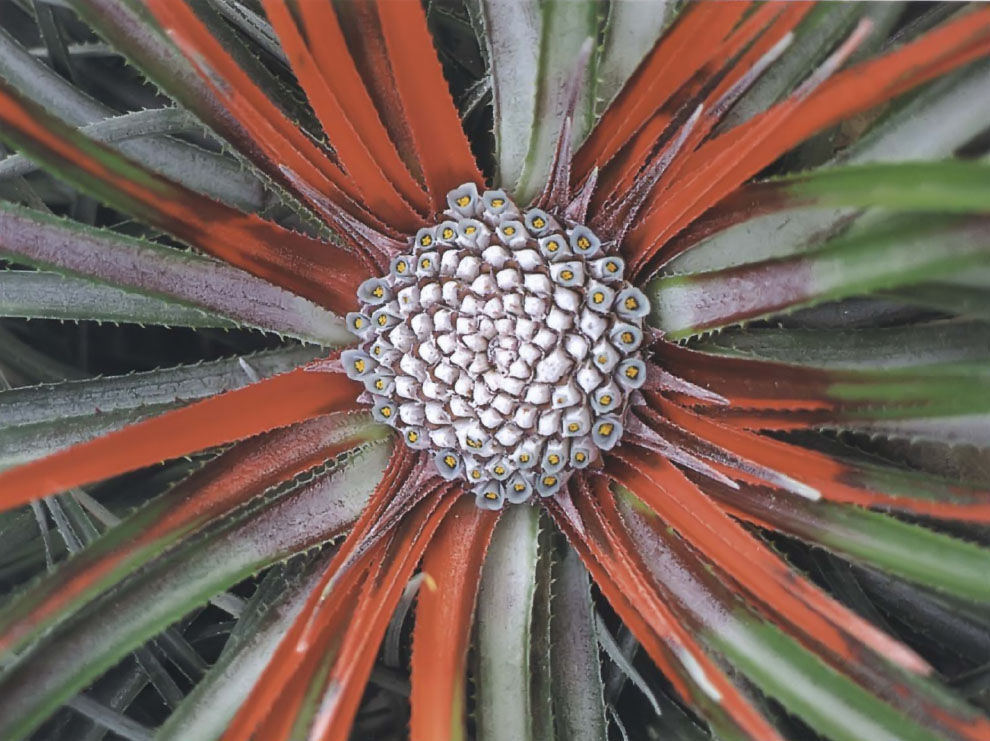
ABOVE
Fascicularia pitcairnifolia – no, this isn’t a mandrill’s bottom but a beautiful exotic flower.
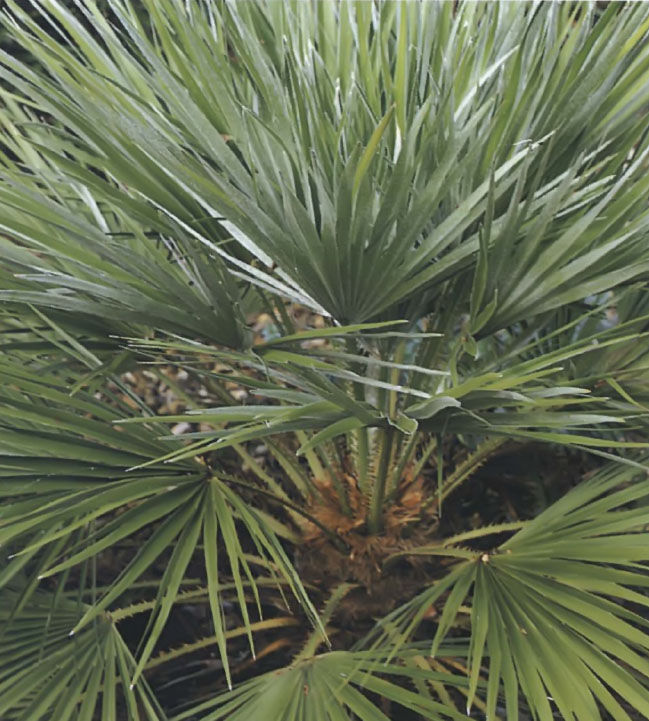
ABOVE
Chamaerops humilis is an essential acquisition for all palm fanatics.
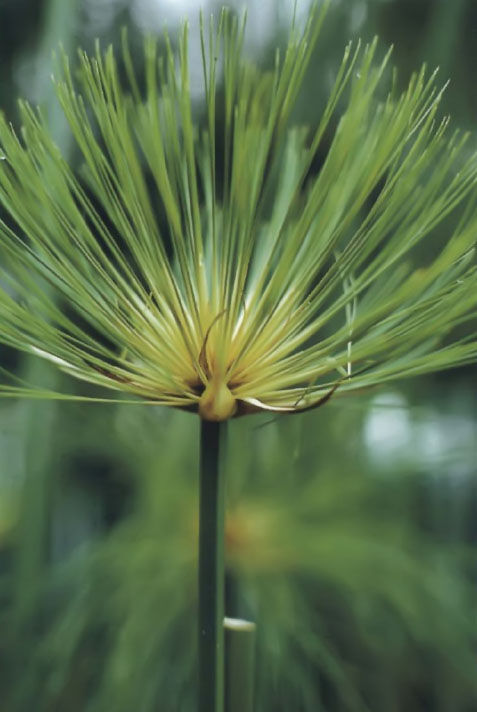
ABOVE
Cyperus papyrus is an excellent addition for any large conservatory.
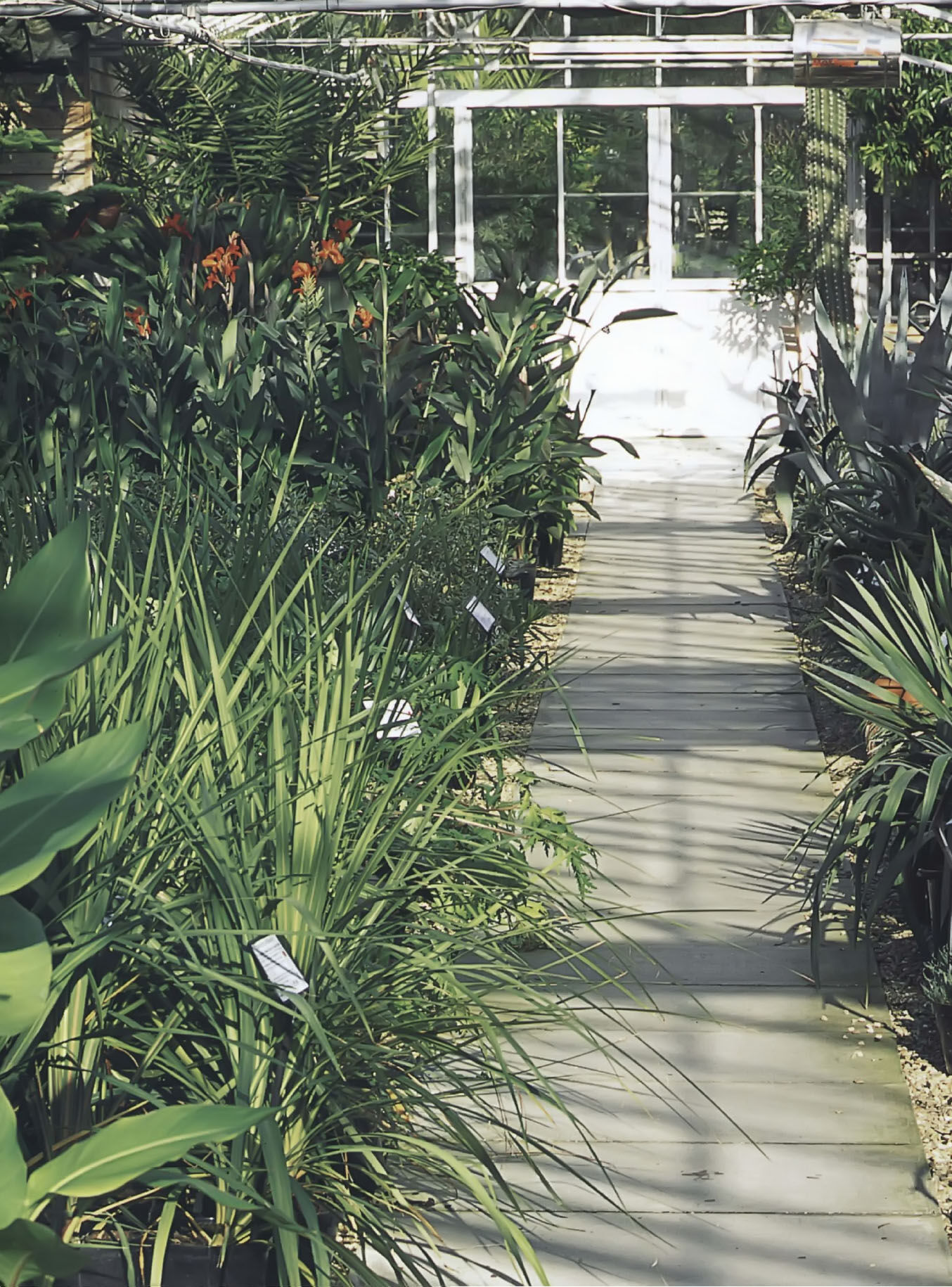
Making the right decisions
Before charging off to your favourite architectural plants nursery, just spend a short while contemplating a few points. This chapter will help you come to the right decisions about the suitability of your choice of plants for their intended positions.
With such a dazzling array of architectural plants to choose from, making your initial selection can be a bit daunting, especially for those who are new to this type of gardening. Apart from spending time learning as much as you can from books, such as this one, visiting local botanic gardens and specialist nurseries to see how the plants are sited and how they grow will help with the choice.
Suitability of site
It is important to assess the suitability of your own garden for the plants that you are considering. Planting spiky desert plants in a boggy position in full shade is bound to end in failure. Similarly, planting bamboos in bone-dry soil on the top of a windy hill will guarantee their survival for only about ten minutes.
Unless you are especially stubborn, there is little point buying plants that have only a slim chance of surviving in your particular plot.
Some sites can be changed fairly easily. For instance, if your soil is poor, it can be enriched with large dollops of food. If the drainage is bad, digging in piles of grit can help enormously. If your garden is on an exposed coast, planting salt-resistant trees to act as a windbreak will hugely increase the possible choice of plants. But, basically, learning as much as you can about every aspect of your garden is a good starting point. Few gardens have just one characteristic. There are nearly always shady corners. There is usually a spot that remains boggy after heavy rain. And it is rare to find a garden without a sun-baked section somewhere.
The soil type should also be ascertained. Most plants in this book will grow in either acid, neutral or alkaline conditions. Some have preferences towards one end of the scale, but are not too fussed. Occasionally, one will be listed as being a lime-hating plant, which means that alkaline soil is not an option. Sometimes, if gardeners are really determined, large planting holes can be dug out and the existing soil replaced with something more suitable to allow their chosen plant to succeed. But this is really only a temporary solution. Eventually, the plant roots will grow down into the natural soil and start to suffer accordingly. This is not, therefore, something I would recommend.
Irrigation is another point to consider. If the chosen plants need frequent watering, then making this task as easy as possible for yourself means that you are more likely to attend to it. If full watering cans have to be lugged up the entire length of the garden every day during a hot summer, your enthusiasm for this chore will soon wane. By installing a nearby tap or automatic irrigation system, the plants will thrive with much less effort.
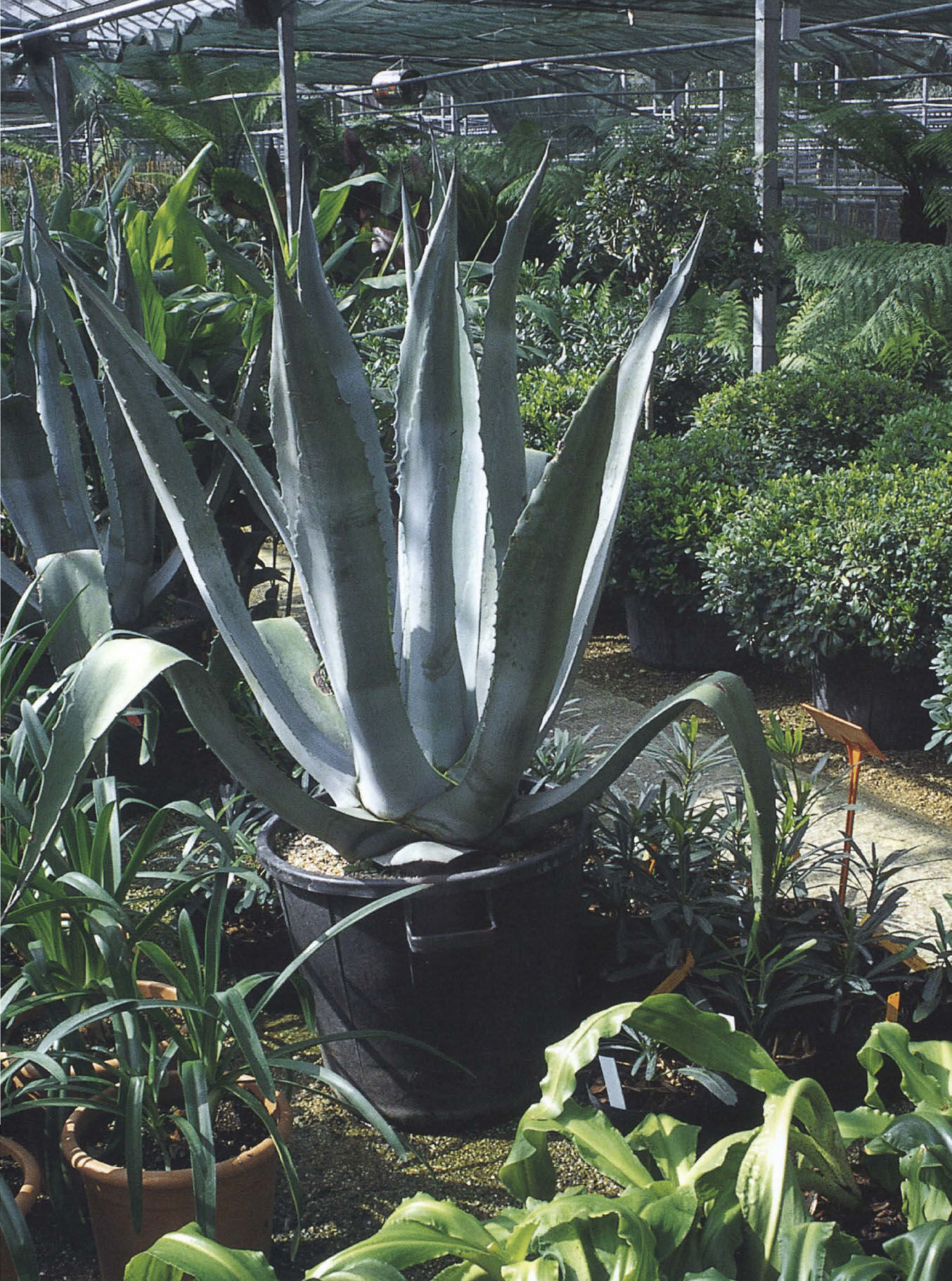
ABOVE
A well-stocked specialist nursery full of mouthwatering horticultural goodies.
Choosing & buying
After inspecting the garden thoroughly, reading through the plant descriptions and making a final decision about what you’d like to grow, the much more exciting task of buying the plants can proceed. There are a couple of things to think about, though, before embarking on the buying expedition. Firstly, where to buy the plants from, and secondly, what size of plants to buy.
Specialist nurseries vs garden centres
Specialist nurseries are great fun to visit. They stock only the plants they are interested in. There’ll be no barbecues, pot-pourri or Christmas decorations in sight – just lots and lots of lovely plants. Nurseries selling architectural plants will be visited by like-minded customers, and experiences and gardening tips can be talked about and shared. The nursery owners and staff can offer expert advice and usually have enough time and enthusiasm to assist with the selection and purchase of any plant required.
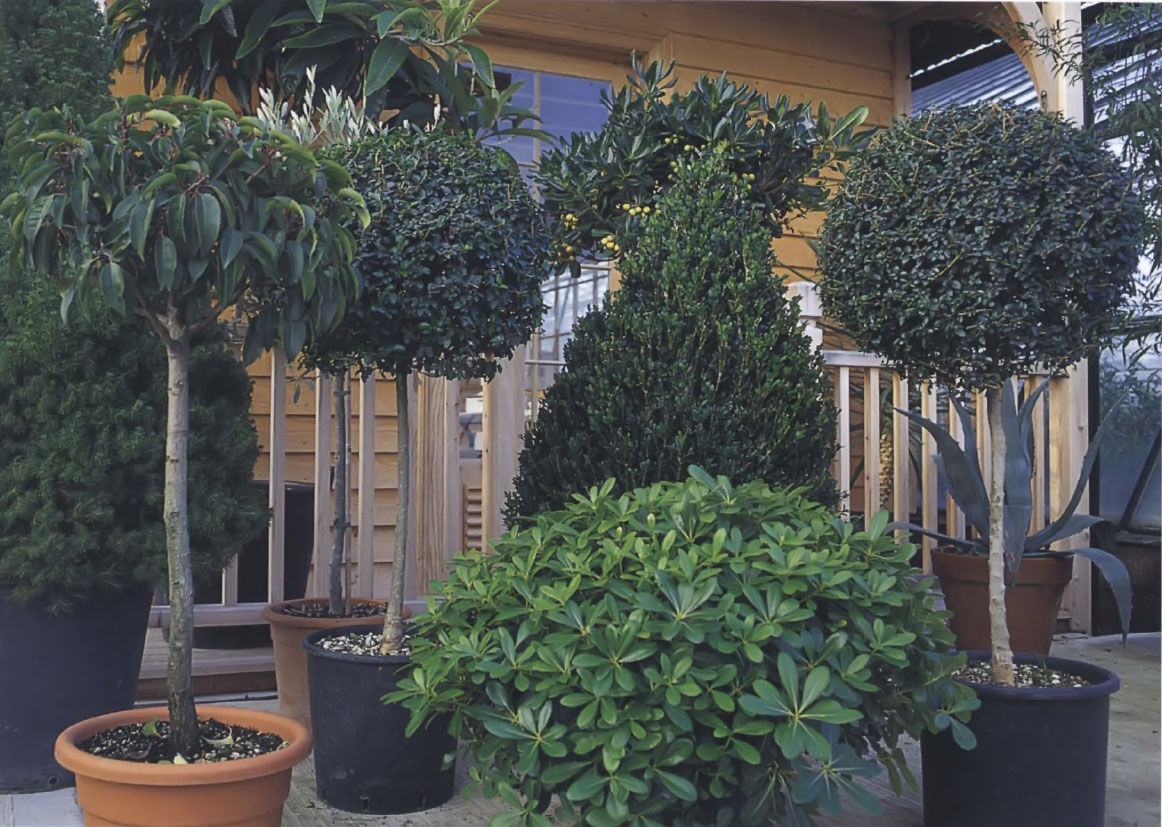
ABOVE


